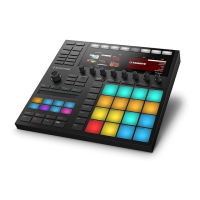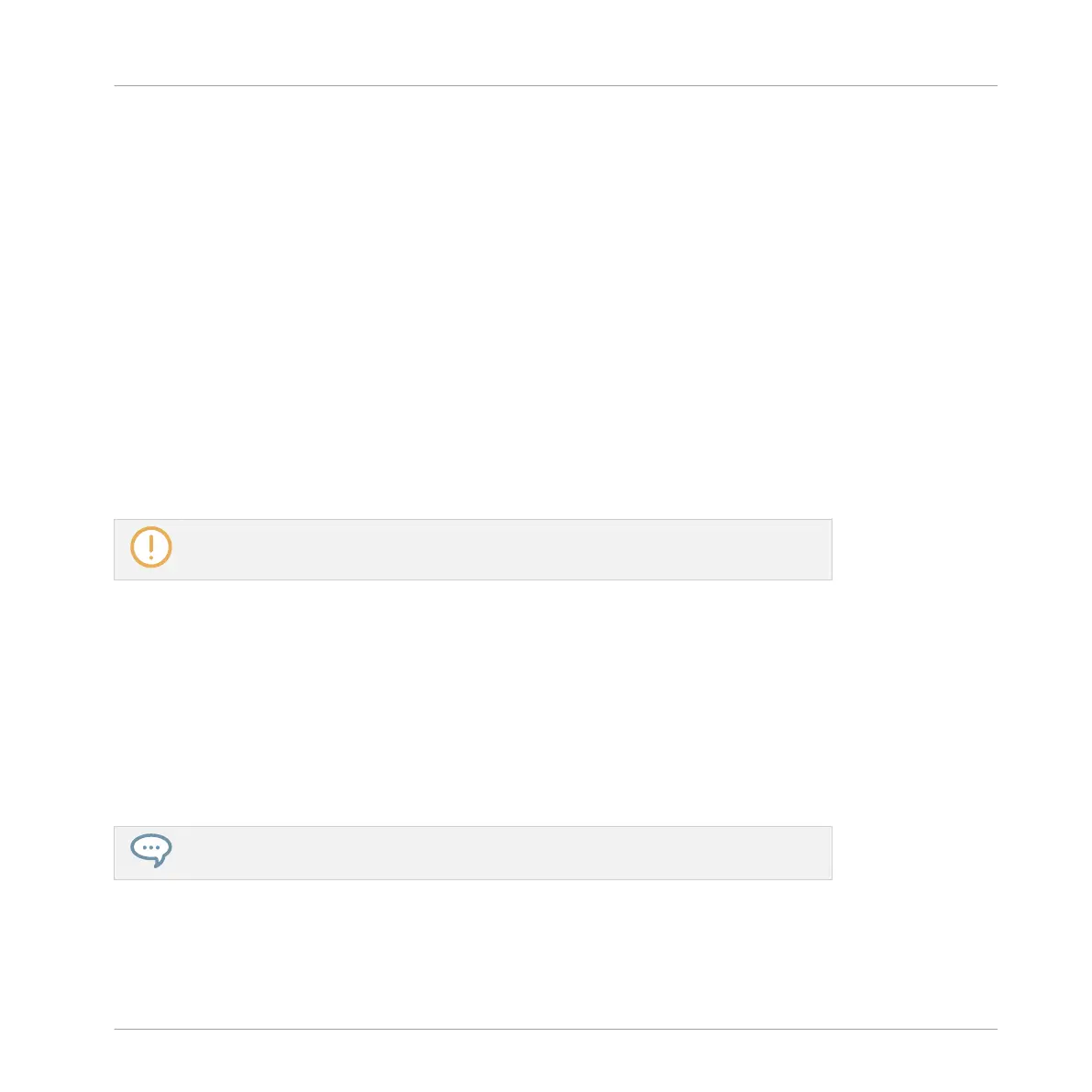Outgoing MIDI
You can also sending MIDI data from Sounds. For example, when MASCHINE is running as a
plug-in in a host environment, this allows you to record your performance on the pads as a
MIDI pattern in your host application. This is described in section ↑11.2.5, Sending MIDI from
Sounds.
11.2.1 Triggering Sounds via MIDI Notes
MASCHINE allows you play your Sound(s) via MIDI (e.g., from a MIDI keyboard).
By default and without any configuration, incoming MIDI notes on any MIDI port and any MIDI
channel will trigger different pitches of the Sound slot currently focused.
To play one or more Sounds via MIDI notes independently of the Sound currently focused, you
need to configure the MIDI input settings of your Sound(s) or of their Group, i.e. define how
the Sound(s) or the Group should react to incoming MIDI notes. This is done in the MIDI page
of the Group or the Sounds Input properties.
There is no MIDI page in the Input properties of the Master.
When configuring these MIDI input settings, keep in mind the following:
▪ MIDI input settings for a Group affect all Sounds in the Group: Each Sound will be triggered
by a different MIDI note. Typically, this allows you to quickly set up a MIDI remote control
for an entire drum kit.
▪ MIDI input settings for a Sound affect only that Sound: Incoming MIDI notes will trigger dif-
ferent notes of this Sound. Typically, this allows you to control a melodic instrument via
MIDI. More precisely, the incoming MIDI notes will be routed to the first Plug-in slot of the
Sound.
If the Sound has no Plug-ins, incoming MIDI notes will be forwarded to the Sound’s
MIDI output, if enabled (see section ↑11.2.5, Sending MIDI from Sounds).
Audio Routing, Remote Control, and Macro Controls
Using MIDI Control and Host Automation
MASCHINE - Manual - 560

